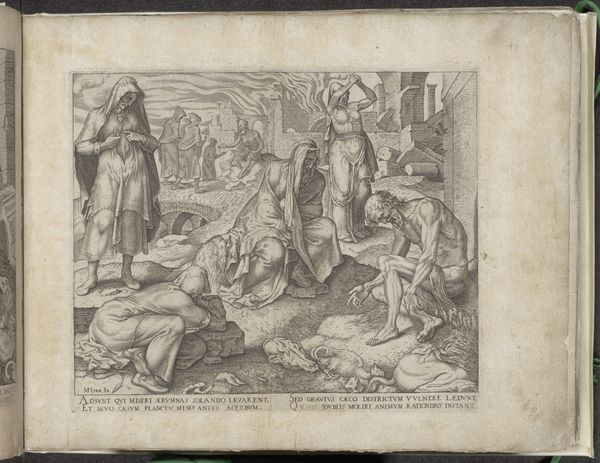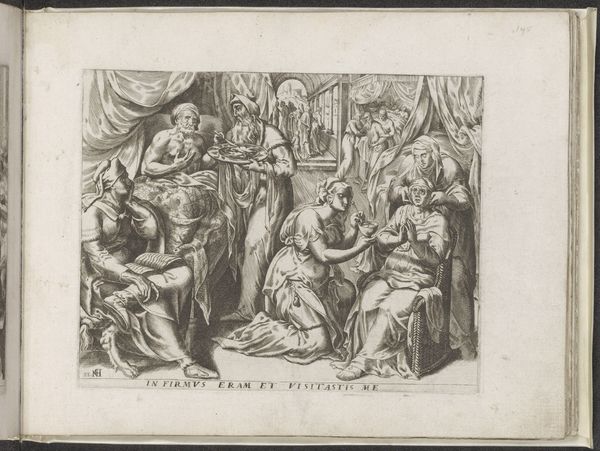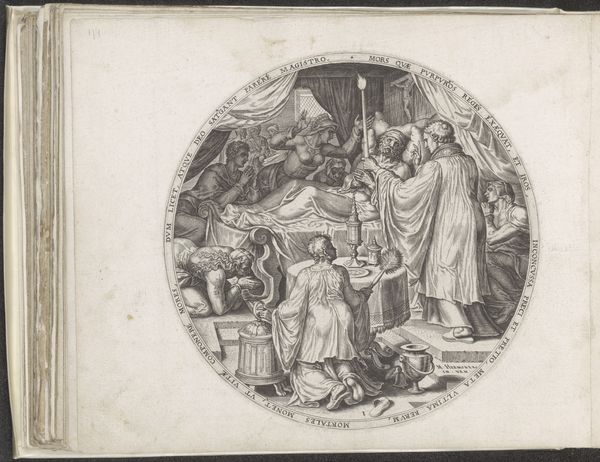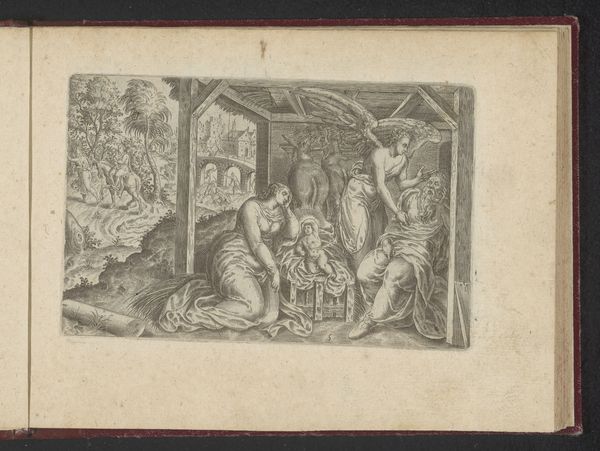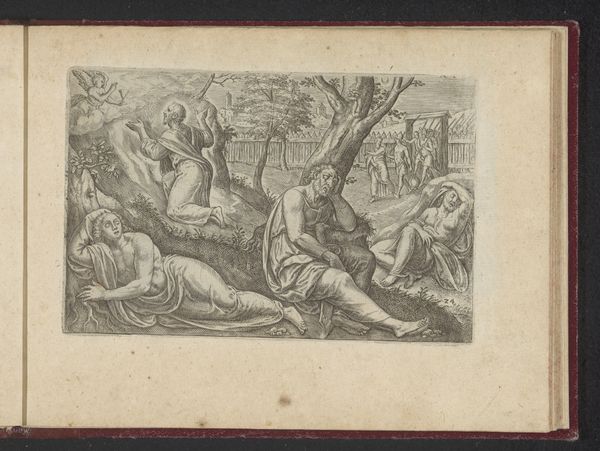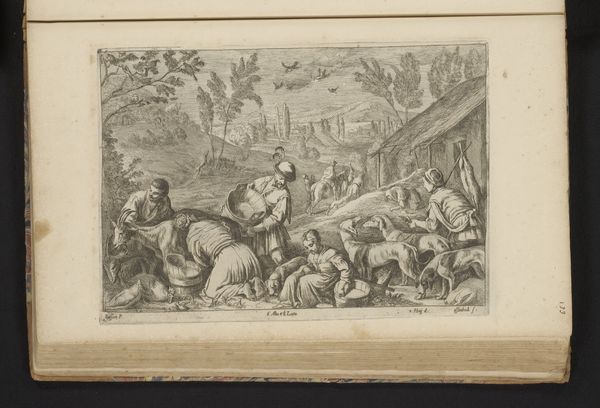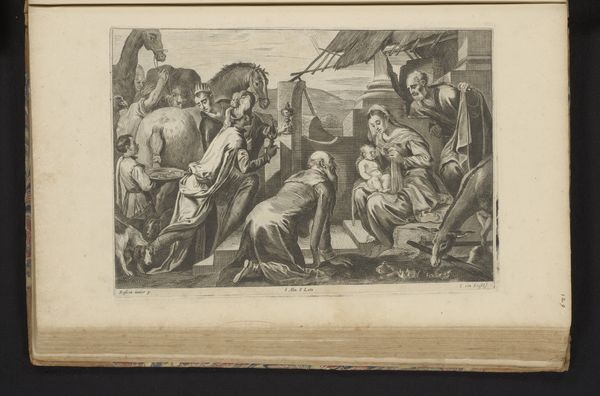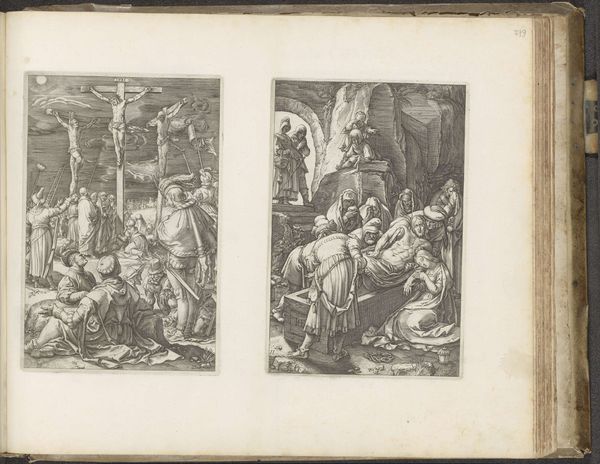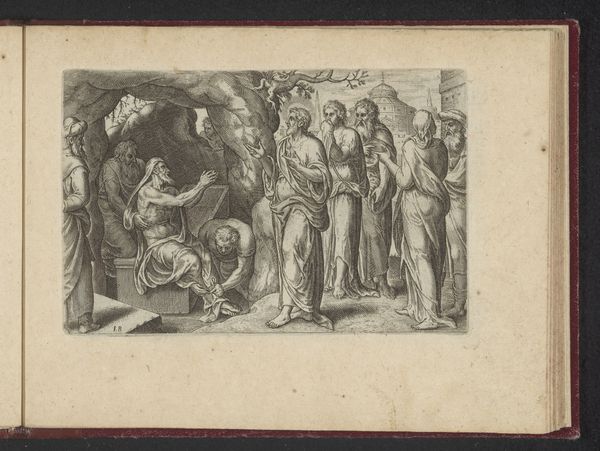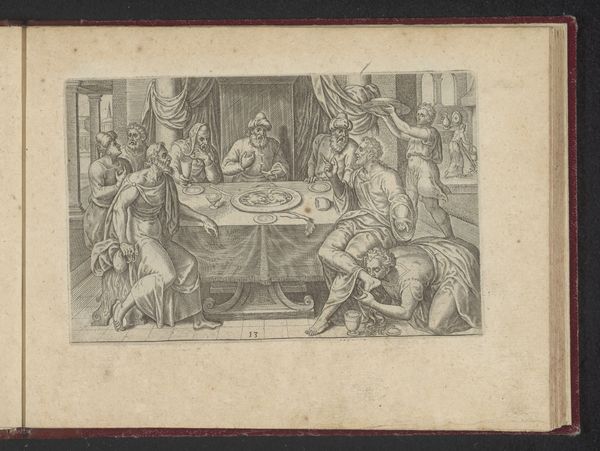
print, engraving
# print
#
landscape
#
figuration
#
history-painting
#
northern-renaissance
#
engraving
Dimensions: height 203 mm, width 246 mm
Copyright: Rijks Museum: Open Domain
Curator: This engraving, “Christ in the Garden of Gethsemane,” created between 1563 and 1567, offers a powerful lens through which to examine the socio-political tensions of the Northern Renaissance. Editor: It's interesting. I find the scene kind of gloomy, especially with that city in the background. How do you interpret this work, especially regarding the social and historical contexts? Curator: The artist presents Christ’s anguish in the garden as more than a personal or spiritual crisis. The sleeping disciples around him could be seen as an allegory for the apathy of those in power, complicit in the systems that oppress. What about the background, and the depiction of Jerusalem? Does that tell you anything? Editor: Well, the landscape has a distinct style for sure. Almost a theatrical backdrop for this deeply personal and theological moment… is there something we can unpack there? Curator: The stylized depiction, almost staged, could be a deliberate critique of the performative nature of power and piety within that specific society. Northern Renaissance prints like these were often circulated widely, acting almost like political cartoons. What do you make of the choice to use printmaking at that specific moment? Editor: So, the image would be widely disseminated... Did these kinds of works help promote social change or inspire revolutionary sentiments, or did they primarily provide religious comfort? Curator: Often, it’s both, right? An image like this provided spiritual comfort for some, and critical engagement for others. Print allowed for mass dissemination of challenging and progressive ideologies disguised within Biblical subject matter. A vital method of subtle social activism! Editor: I never considered the power of printmaking in spreading those kinds of complex, and potentially subversive, social commentaries. It gives a whole new layer of depth to the work. Curator: Exactly! And considering the social position of many early printmakers from marginalized groups in society adds further complexities that invite additional interrogation.
Comments
No comments
Be the first to comment and join the conversation on the ultimate creative platform.
